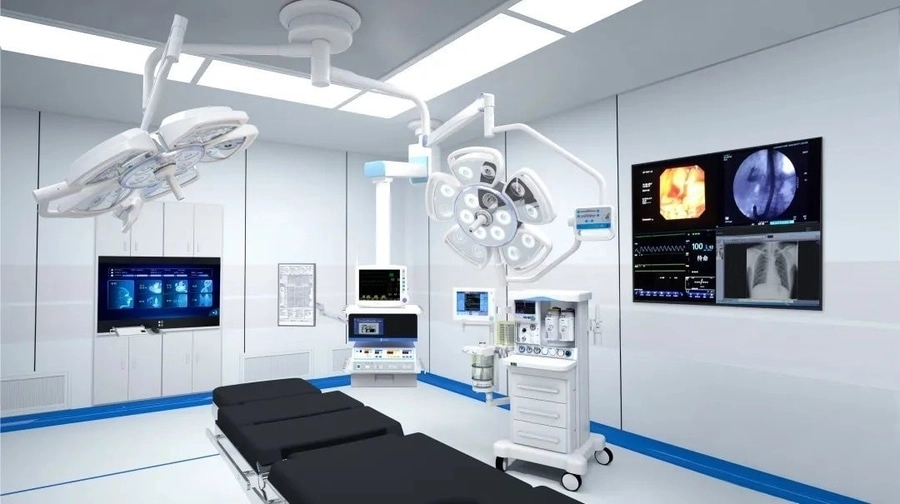Mitigating IoT Vulnerabilities is Especially Tough in Healthcare — Here’s Why

The number of IoT (Internet of Things) devices and the amount of data they generate is growing exponentially in the healthcare industry. As a result, the security risks posed by these technologies have become more severe and far-reaching. Yet despite this growth in technology and risk, there remains a lack of effective measures to protect these systems from cyberattacks.
According to research from 2022, 53% of hospital IoT devices have known security vulnerabilities. Healthcare IT professionals struggle to identify and address the riskiest vulnerabilities efficiently. However, a security breach of these devices could create life-threatening consequences if not handled properly.
This blog will explore the various threats and IoT vulnerabilities in healthcare. We’ll provide an overview of the current landscape for medical tech security and explain how to shield and strengthen these systems.
Why Is Securing Healthcare IoT So Much More Difficult?
Securing healthcare IoT devices is more challenging than in other industries due to various factors, including outdated hardware and software, a vast array of connected devices, and government privacy regulations. Below, we’ll look at each of these issues in more detail.
Outdated Hardware and Software
Many medical machines are not equipped with the latest security protocols, making them vulnerable to attack. These devices often use legacy operating systems that can’t be updated, which can further increase the risk of an exploit. Just 22% of healthcare organizations worldwide have up-to-date software running on all equipment.
Updating medical hardware poses similar challenges. Without the ability to receive regular security patches, these devices can become easy targets for hackers. Mitigating vulnerabilities with clinically valid alternatives to patching is often a best practice. This could include closing specific ports or changing network access, but only if these actions don’t jeopardize the device’s operational characteristics.
The Introduction of Telehealth
Telehealth has revolutionized healthcare delivery, allowing for remote consultations and monitoring. However, this increased reliance on network and cloud connections has added another layer of complexity to healthcare security. Because telehealth systems rely on a digital infrastructure to operate, they can be especially vulnerable if not properly secured.
Increasing Number of Medical Devices In The Market
The adoption of newer healthcare technologies has led to an explosive growth in the number of medical devices connected to the internet. It’s predicted that by 2026, at least seven million IoMT (Internet of Medical Things) devices will be deployed worldwide. As the number of devices grows, so does their attack surface area and potential for attack.
Patient Health and Privacy Concerns
Data security is an integral part of healthcare. A breach could expose sensitive patient information such as medical records, payment information, or even biometric data. If a breach were to occur, it could trigger HIPAA violations and other costly legal penalties.
But beyond financial risk, patient health is also at stake if vulnerabilities aren’t addressed. Hackers can exploit unsecured systems to access drug or radiation dosages and manipulate vital sign readings, leading to dangerous results.
4 Challenges of Securing IoT Vulnerabilities in Healthcare
Healthcare IT departments now face several unique security challenges. The most common include:
1. IoMT Is Unique
Healthcare stands apart from other industries that depend on IoT. Medical devices often contain sensitive patient information and require specialized security protocols. However, those protocols can be difficult or even impossible to implement. Some IoMT devices cannot be upgraded or replaced. Security teams need to be aware of the nuances in this space and work to efficiently mitigate risk rather than try to eradicate every vulnerability.
2. Security Teams Can’t Deploy Mitigation Strategies On A Whim
Security teams can’t simply deploy patches or retrofit every risky device, which could seriously affect a hospital’s operations. Post-market optimization is essential to limit risk and ensure medical devices remain in compliance with regulations.
Healthcare organizations must decide whether creating their own mitigation plan is worth the time and resources. In many cases, they’re better off leaving vulnerable devices as-is and putting additional security measures in place rather than rolling out changes that could break functionality or cause compatibility issues with existing systems.
3. Prioritization Needs A Risk-Based Approach AND IoMT Threat Knowledge
Mitigating vulnerabilities goes beyond just relying on IoT manufacturers and requires a deep understanding of how threats might come about and how to be proactive against them. Healthcare organizations must take a risk-based approach when prioritizing which vulnerabilities to address first. They must then understand the potential threats IoMT devices pose and how they can be mitigated.
To achieve this, security teams must develop a deep understanding of the risk landscape and understand how it applies to their specific IoMT infrastructure. This includes identifying potential threats, understanding how they might be exploited, and understanding the potential consequences of an attack. Teams must also have a solid understanding of the device, its configuration, its protocols, and any external systems to which it connects. For example, a new zero-day vulnerability may not be a risk for all models and configurations of a device. Using this information, security teams can then fully prioritize the most critical vulnerabilities and develop strategies to mitigate these risks effectively.
4. Accurate Risk Assessment Is Crucial For IoMT Security
When implementing security features, you need an accurate risk assessment. This includes assessing the manufacturer’s security capabilities detailed in the Manufacturer Disclosure Statement (MDS2). An MDS2 form lists security features, weaknesses, and upgrade information associated with the device.
Does the device transmit Protected Health Information (PHI)? Does it come with anti-malware preinstalled? The MDS2 should be part of any risk assessment process to identify where additional measures must be deployed.
It’s also essential to have a doable and achievable implementation plan. For example, a healthcare organization with limited resources may opt for a phased-in approach to security feature implementation.
Secure IoT Healthcare Vulnerabilities and Optimize Mitigation Efforts With Asimily
Asimily provides a comprehensive solution to securing IoMT devices and optimizing mitigation efforts. Asimily’s secure IoMT risk remediation platform provides visibility, control, and monitoring of IoT device vulnerabilities.
Asimily catalogs every smart device in your operation. Our intelligent security platform can identify vulnerable IoMT devices and assess the associated risks to prioritize patching or other mitigation efforts. It doesn’t stop with just noting vulnerabilities exist; it understands the likelihood and impact of an exploit for installed devices, to better prioritize risk-removing remediations. With Asimily, you can ensure that your IoMT devices are secure and compliant with state and federal regulations.
Schedule a consultation with an Asimily expert to see how you can solve security issues while also keeping your patients and organization safe.
Secure Every IoT Device.
Automatically.
Cyber threats move fast — so should you. Asimily gives instant inventory and smart, prioritized risk mitigation insights for every IoT, OT, and IoMT device — so you can take action before threats strike.




